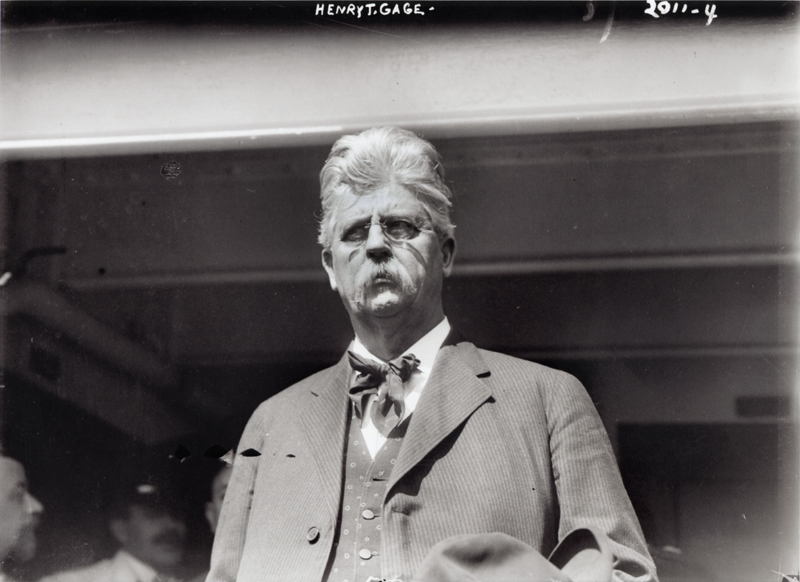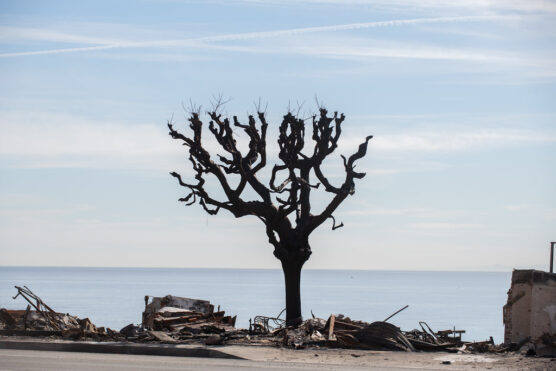The dark, ashy sediment appearing on Los Angeles-area beaches does not appear to contain chemicals related to wildfires at levels that are dangerous to human health.
The Los Angeles County Department of Public Health based this conclusion on results from beach sand and sediment testing conducted by the L.A. Regional Water Quality Control Board at the end of February.
Samples from nearly a dozen beaches along the L.A. County coastline were tested for metals, polychlorinated biphenyls (PCBs) and polycyclic aromatic hydrocarbons (PAHs), which are chemicals that may be found in runoff after wildfires. These results were compared to California and U.S. environmental standards for residential soil and all results were below those values or within background concentrations.
The Water Quality Control Board plans to conduct another round of sediment sampling before Memorial Day.
There are no plans to remove the sediment. Attempting to scrape it from rocks and sand would destroy marine habitats, erode the shoreline, and cause long-term environmental damage. Instead, natural tides and weather will gradually break down and wash away the sediment, allowing the ecosystem to recover naturally.
Public Health Lifts Fire-related Ocean Water Quality Advisory
Based on water quality results from the LARWQCB, Public Health has also lifted the ocean water quality advisory for fire-impacted beaches. Periodic water quality testing from the end of January through mid-March found no wildfire-related substances at levels dangerous to human health.
Public Health will continue to monitor ocean water quality and issue advisories when the ocean water exceeds State bacterial limits. For more information, visit publichealth.lacounty.gov/beach.
Debris Removal Continues
Crews from the L.A. County Department of Beaches and Harbors and the city of Santa Monica continue to remove debris that waves wash onto the sand. This debris comes from both discharging waterways and burned or destroyed properties along the coast. During high tides, waves sweep the debris from the shore and into the ocean, where the current carries the debris to other beaches.
Beachgoers should still avoid fire debris, whether in the water or on the shore. This debris includes tangled branches, twisted metals, charred building materials, and even the dark sediment. While the sediment itself is not hazardous, its dark color can hide rusty nails, shards of glass and other sharp objects that may cause injury. Dangerous pieces of large debris on the sand should be reported to the nearest lifeguard or beach maintenance crews.
Stay Informed
Beachgoers should check with the nearest open lifeguard tower for the latest information on beach conditions. Other places to stay up to date include:
Public Health Ocean Water Quality Hotline: 800-525-5662
Public Health Ocean Water Advisories: publichealth.lacounty.gov/beach
Wildfire-Related Beach Impacts: beaches.lacounty.gov/wildfires
Social media accounts: DBH (@lacdbh), Public Health (@lapublichealth), Public Works (@lacopublicworks), L.A. County Lifeguards (@lacolifeguards)
Unsafe beach conditions should be reported to the nearest lifeguard.
Like this:
Like Loading...
Related





 Tweet This
Tweet This Facebook
Facebook Digg This
Digg This Bookmark
Bookmark Stumble
Stumble RSS
RSS




























REAL NAMES ONLY: All posters must use their real individual or business name. This applies equally to Twitter account holders who use a nickname.
0 Comments
You can be the first one to leave a comment.